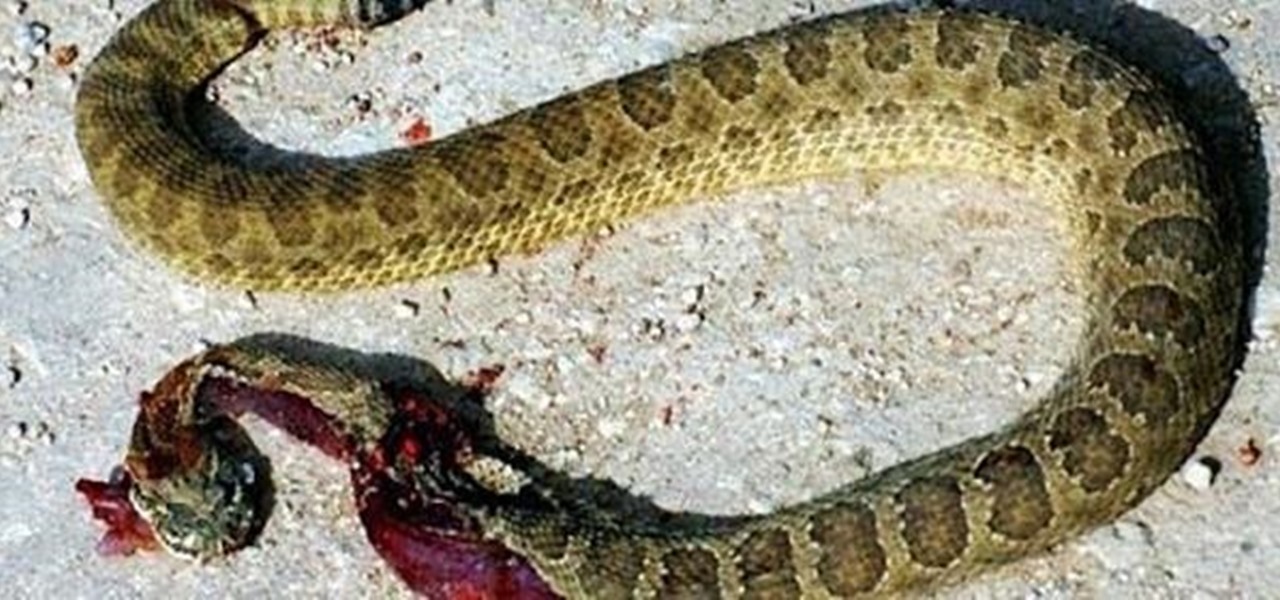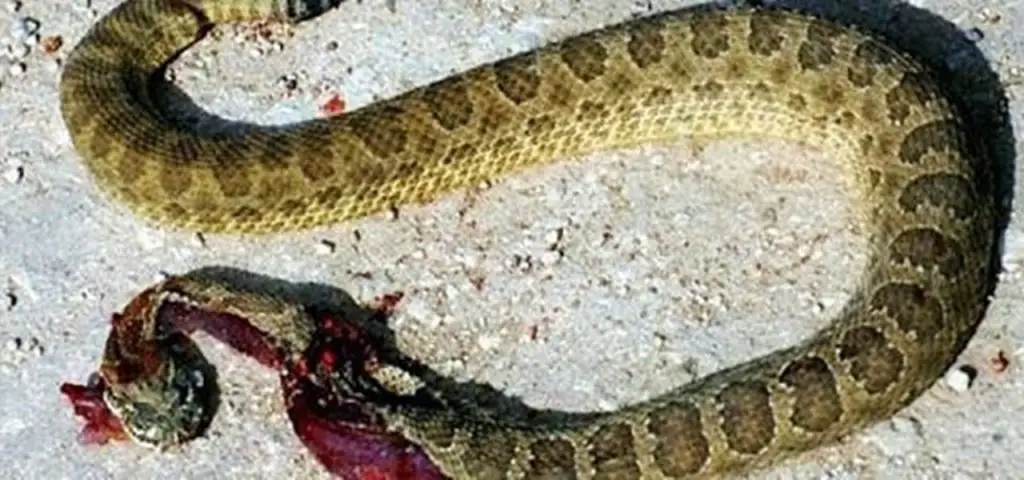Rattlesnakes are a common sight in many parts of the world, and while they are not usually aggressive, they can be dangerous if provoked. Knowing how to kill a rattlesnake can be an important skill to have, especially if you live in an area where they are prevalent.
In this article, we will explore some of the most effective methods for killing rattlesnakes, including using a shovel or hoe, a gun, or even a chemical deterrent. Whether you’re a seasoned outdoorsman or just looking to protect your family and property, this guide will give you the knowledge and confidence you need to safely and effectively deal with rattlesnakes.
If you encounter a rattlesnake, it is best to stay away from it and call a professional to remove it. However, if you must kill a rattlesnake, use a long-handled shovel or hoe to strike it at the base of the head, severing it from the body. It is important to keep a safe distance and wear protective gear, such as boots and gloves.

How to Kill Rattlesnakes: A Comprehensive Guide
Rattlesnakes are venomous creatures that can pose a serious threat to humans and pets. Whether you encounter one in your backyard, on a hike, or while camping, knowing how to kill a rattlesnake safely and effectively is important. In this article, we will provide you with a step-by-step guide on how to kill rattlesnakes.
Step 1: Identify the Rattlesnake
The first step in killing a rattlesnake is to identify the species correctly. There are many different types of rattlesnakes, and some are more dangerous than others. Western diamondbacks, Eastern diamondbacks, and timber rattlesnakes are some of the most dangerous species of rattlesnakes in North America. It is important to note that rattlesnakes are protected in some states, so make sure you check the laws in your area before attempting to kill one.
Once you have identified the species, you can then assess the situation and decide on the best method for killing the rattlesnake. Killing a rattlesnake is not recommended unless it poses an immediate threat to you or your pets.
Step 2: Use a Long-Handled Tool
When killing a rattlesnake, it is important to use a long-handled tool, such as a shovel or hoe. This will allow you to keep a safe distance from the snake and avoid getting bitten. It is important to position yourself so that you have a clear view of the snake and can strike it quickly and accurately.
Step 3: Cut off the Head
The most effective way to kill a rattlesnake is to cut off its head with the long-handled tool. This is a quick and humane method that ensures that the snake is dead and cannot pose a threat to humans or pets. Be sure to aim for the base of the snake’s head and use a sharp tool to ensure a clean cut.
Step 4: Dispose of the Body
Once the rattlesnake is dead, it is important to dispose of the body properly. You can bury the body in a deep hole to prevent other animals from eating it, or you can dispose of it in a garbage bag and throw it away. Be sure to wear gloves when handling the body to avoid exposure to any remaining venom.
Benefits of Killing Rattlesnakes
Killing rattlesnakes can help to protect humans and pets from their potentially deadly bites. It can also help to reduce the population of rattlesnakes in an area, which can help to prevent future encounters and reduce the risk of snakebites.
Vs. Catch and Release
Some people prefer to catch and release rattlesnakes instead of killing them. While this can be a humane option, it is important to note that releasing a rattlesnake into a new area can cause problems for both the snake and the environment. Rattlesnakes are territorial creatures and may struggle to find food and shelter in a new area. Additionally, releasing a venomous snake into a new area can pose a risk to humans and pets.
Precautions to Take When Killing Rattlesnakes
When killing rattlesnakes, it is important to take precautions to avoid getting bitten. Always wear long pants and boots to protect your legs, and wear thick gloves to protect your hands. Be sure to position yourself so that you have a clear view of the snake and can strike quickly and accurately.
Conclusion
Killing rattlesnakes is not a task to be taken lightly, and should only be done when necessary. By following the steps outlined in this article, you can safely and effectively kill rattlesnakes and protect yourself and your pets from their potentially deadly bites. Remember to always check the laws in your area before killing a rattlesnake, and take precautions to avoid getting bitten.
Frequently Asked Questions
Here are some common questions about how to deal with rattlesnakes:
What are some signs that a rattlesnake is nearby?
If you’re hiking or spending time outdoors, keep an eye out for warning signs that a rattlesnake might be nearby. Look for the snake’s distinctive rattle sound, which serves as a warning to stay away. You might also see the snake’s body coiled up or its head raised off the ground. Be especially cautious in areas with tall grass, rocks, and other places where snakes might be hiding.
If you have a rattlesnake on your property, you might see shed snake skin, droppings, or other signs of the snake’s presence.
What should I do if I encounter a rattlesnake?
If you see a rattlesnake, the best thing to do is to give it plenty of space and avoid disturbing it. Keep your distance and don’t try to pick it up or move it. If you’re on a trail, step off to the side and wait for the snake to pass. If the snake is in your yard or near your home, call a professional wildlife removal service to safely capture and relocate the snake.
Remember that rattlesnakes are an important part of the ecosystem and should be treated with respect. They are not naturally aggressive and will only bite if they feel threatened or provoked.
Is it legal to kill a rattlesnake?
The laws regarding killing rattlesnakes vary depending on where you live. In some states, it is illegal to kill any native snakes, including rattlesnakes. In other states, you may be allowed to kill a rattlesnake if it poses an immediate threat to human life or property. Before taking any action, check with your local wildlife agency to find out the laws in your area.
Remember that killing a rattlesnake should always be a last resort. There are many ways to safely and humanely remove a snake without resorting to lethal measures.
What are some humane ways to remove a rattlesnake?
If you need to remove a rattlesnake from your property, there are several humane options available. You can use a snake hook or tongs to gently pick up the snake and move it to a safe location, such as a nearby field or wooded area. You can also use a snake trap to capture the snake and release it elsewhere.
If you’re not comfortable handling a snake, or if you’re not sure how to do it safely, call a professional wildlife removal service. They will have the knowledge and tools to safely and humanely remove the snake without harming it.
How can I prevent rattlesnakes from coming onto my property?
There are several steps you can take to make your property less attractive to rattlesnakes. Keep your yard clean and free of clutter, such as piles of rocks or wood, which can provide hiding spots for snakes. Seal up any holes or gaps in your fence or foundation to prevent snakes from entering your yard.
You can also make your yard less hospitable to the rodents and insects that rattlesnakes prey on. Keep your trash cans tightly sealed, eliminate standing water, and remove any other sources of food or shelter for rodents and insects.
How to kill a Rattlesnake Properly
In conclusion, killing a rattlesnake is not an easy task, but it can be done with the right precautions and techniques. It is important to remember that rattlesnakes serve a purpose in the ecosystem and should only be killed if they pose a direct threat to human safety.
If you do need to kill a rattlesnake, using a long-handled tool such as a shovel or hoe is recommended to keep a safe distance. Aim for the head and strike quickly and decisively. Always wear protective clothing and gear and dispose of the snake properly.
However, prevention is always the best course of action. Keep your yard and home free of debris that could attract snakes and keep children and pets supervised when outside. Knowing how to identify and avoid rattlesnakes can also go a long way in preventing dangerous encounters.


